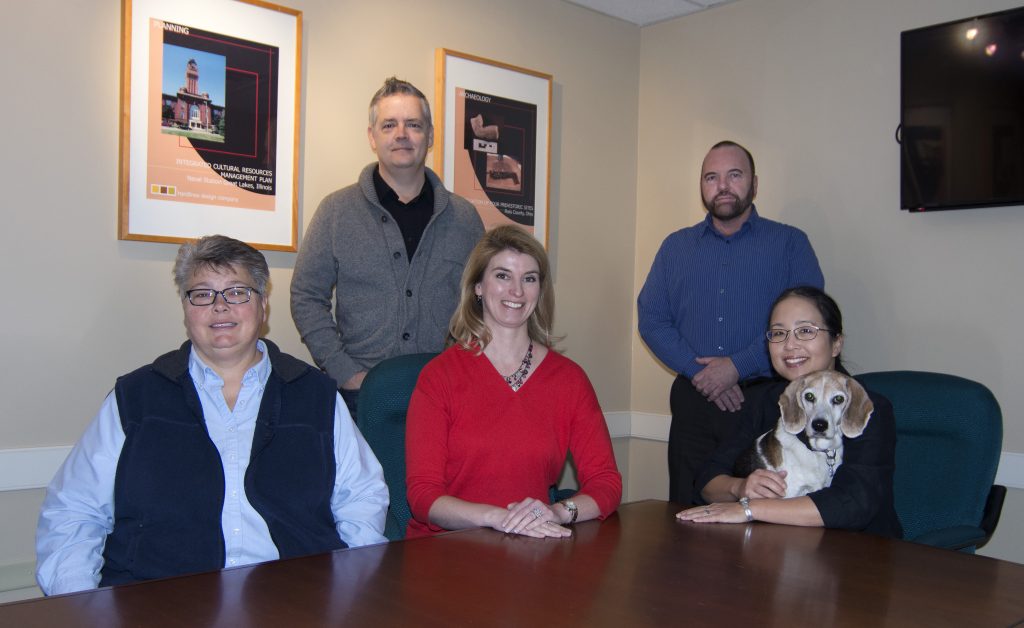
Category Archives: Hardlines Design Company
HDC President Spotlighted by Women Presidents’ Organization
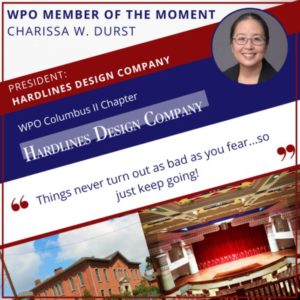
HDC President Charissa W. Durst was recently highlighted as a “Member of the Moment” by the Women Presidents’ Organization (WPO). Charissa was invited to join the WPO Columbus Chapter II in 2014 and she has continued to be an active member. WPO was founded in 1997 by Dr. Marsha Firestone as the ultimate affiliation for successful women entrepreneurs worldwide. Its mission is to accelerate business growth, enhance competitiveness, and promote economic security for women-led companies through confidential and collaborative peer-learning groups.
Happy Holidays from Hardlines Design Company (and Ziti)!
HDC Work Featured in Toledo Blade Article: HDC Completes Renovations and Updates to Lathrop House Historic Report
The Toledo Blade recently published a newspaper article on the Lathrop House in Sylvania, Ohio. HDC was quoted in the article about their involvement in the rehabilitation of the house.
In 2006, HDC was commissioned by Toledo Metroparks to prepare construction documents to stabilize the Lathrop House using transportation enhancement funds from the Ohio Department of Transportation. The house had just been moved from its original site to a location within a city park to save it from demolition. At the request of the Ohio Historic Preservation Office (OHPO), HDC also prepared a historic structure report to guide the proposed rehabilitation of the property, which was completed in 2007. Upon OHPO’s approval of the report, HDC submitted construction documents to reinforce the first-floor structure, which consisted of tree limbs with bark still intact, rehabilitate the windows, replace the roof, and repair the siding to make the house weathertight.
The house was built in 1840 in the popular Greek Revival style of its time. In addition, HDC’s investigations revealed that what was assumed to be an addition was actually a separate older house, which had been repurposed and attached to the Lathrop House as an addition.
In 2014, the new basement was renovated into an Underground Railroad museum exhibit. Since then, visitors have been asking to tour the first and/or second floors, and in 2020 Heritage Sylvania commissioned HDC to update their 2007 Historic Structure Report to include the 2014 renovation and to recommend first and second floor rehabilitations, including the location of an elevator. Click here for a copy of the updated report.
Check out these before and after pictures of the house’s exterior renovations:
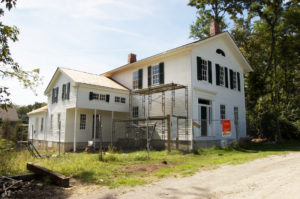
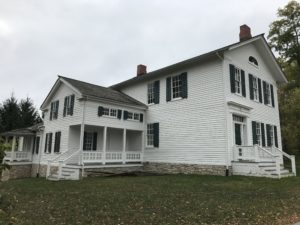
The Lathrop House under construction in 2008 (left) and the Lathrop House in 2020 (right)
6 Tips for Keeping Your Company Strong in an Economic Downturn
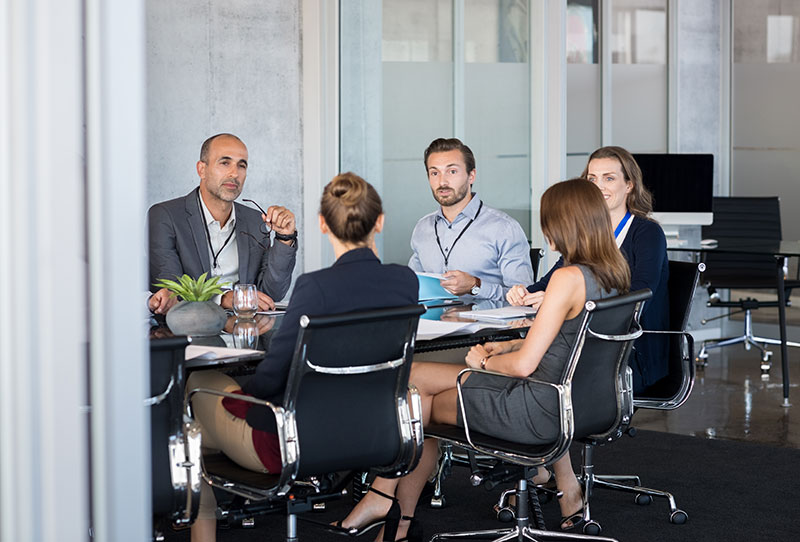
If you are a business owner, steering your firm through 2020’s pandemic, economic shutdown and recession is probably one of the most stressful things you’ve ever faced. But sometimes slow business can spark ideas, force decisions, and open up opportunities. When I started my architecture firm in 1990, it was in part because of a recession — there weren’t many other options for me since no firms were hiring at that point. In 2008, we came through it, stronger, and also wiser. Now, as 2020 brings more uncertainty every day, here are a few things I’ve learned in my 30 years running a business that have helped our firm stay strong and stable no matter what’s happening in the economy.
- Be assertive. Don’t be afraid to ask for the contract or deal. This was probably my very first lesson. Right as I got out of grad school, and was applying for jobs, I was getting a lot of responses that firms just weren’t hiring, didn’t have any openings, etc. This was in 1990, and that was my first clue that the economy was heading south. So, I took an internship with the National Parks Service for the summer. It was a job I had worked the previous two summers. When it was over in the fall, there was still quite a lot of work left to be done. So, even though we were fresh out of school and had only recently formed our company, my business partner and I made the pitch: Hire us to finish the project. We knew the project well, and we were inexpensive thanks to our youth. It worked, and we got the job. Lesson learned: Even when nearly all signs point to no, ask anyway.
- Stay on top of information about trends in your industry. During the first year of owning my firm, I went to a conference and heard a keynote speech about the future of the architecture industry. The speaker predicted there would be major consolidation and that the small firms that survived would be highly specialized. There were other industry news reports saying similar things, and just observing what was happening around me supported it. Back then, a “small” architecture firm by SBA standards was about $1M to $2M in annual revenue. Now, it’s more like $25M. And that change was caused by exactly what that speaker predicted — small firms got bought and folded into big firms. Watching this unfold, we stayed on course in our niche — historic preservation work. It worked, as we developed expertise and relationships that solidified and strengthened our reputation.
- But also diversify. This sounds counterproductive, but what I mean is to find your niche. Find that pocket in your market where there aren’t a lot of competitors and truly differentiate yourself. Then, make sure that you are fully covering the market to get diversified revenue streams. For me, that meant specializing in historic preservation work and developing capabilities in the related field of cultural resources. Our firm had two divisions for quite a long time — an architecture division and a cultural resources division that dealt with historic artifacts and resources, more on the archaeology side for site reviews. So, within our specialized niche, we had diversified into different types of projects. We also do a lot of government work for publicly owned buildings. But we also do private restorations too. So, again, diversification within your niche helps you make pivots when different parts of the economy weaken.
- Commit to high-level service. When firms get really cost-conscious during downturns, service is always part of the equation. Can you do the project right the first time? Will you pay attention to the details and get them right, and take care of your client? Many businesspeople have had the experience of choosing the lowest-priced proposal when trying to save money, or, alternately, selecting the big flashy name because they cut their prices during a downturn. But in both situations, it’s not uncommon to be disappointed in the quality or service. If you have a specialty and can deliver better than anyone else, that market differentiation can pay off when you are suddenly faced with a lot of competitors when work is scarce because of a downturn.
- Develop partnerships. When work is scarce and there isn’t much to bid on or submit proposals for, sometimes the angle is to join forces with a firm that has a different specialization than you, so together you are stronger than other bigger competitors. You’ll have deeper, more extensive expertise and can still compete with the big flashy names on price. Building these relationships with partners you can trust and have experience working with can be an advantage in a downturn.
- Say yes to the volunteer or board opportunity. Many times being asked to volunteer for a trade or community organizations, or to take on a board position in one of those organizations can feel like an obligation you don’t have time to commit to. But say yes anyway, and put your all into it. it strengthens your reputation. In turn, doing great work and showing your capabilities to a new audience is one of the most worthy investments in your company you can make. Relationships and trust pay dividends all the time, but especially in a downturn. But you have to build them when times are good.
As you can see, weathering an economic downturn is about expanding your lens for opportunity and potential. How you handle your business relationships can often be just as important as how you handle your P&L sheet. And that view has served me well for 30 years and counting.
Fall 2019
HDC President Charissa Durst receives Smart 50 Business Award
Since 2014, the Smart Business Columbus Smart 50 Awards have recognized the top executives of the 50 smartest companies in central Ohio for their ability to effectively build and lead successful organizations. All 50 winners were honored at a special celebration, and three organizations received specialty awards for their achievements in three category areas — innovation, impact and sustainability. Additionally, all guests were treated to a keynote address on what it takes to lead a successful “smart” company. Click here to read about what set the 50 honorees apart.

Five Oaks Historic Home project in the news
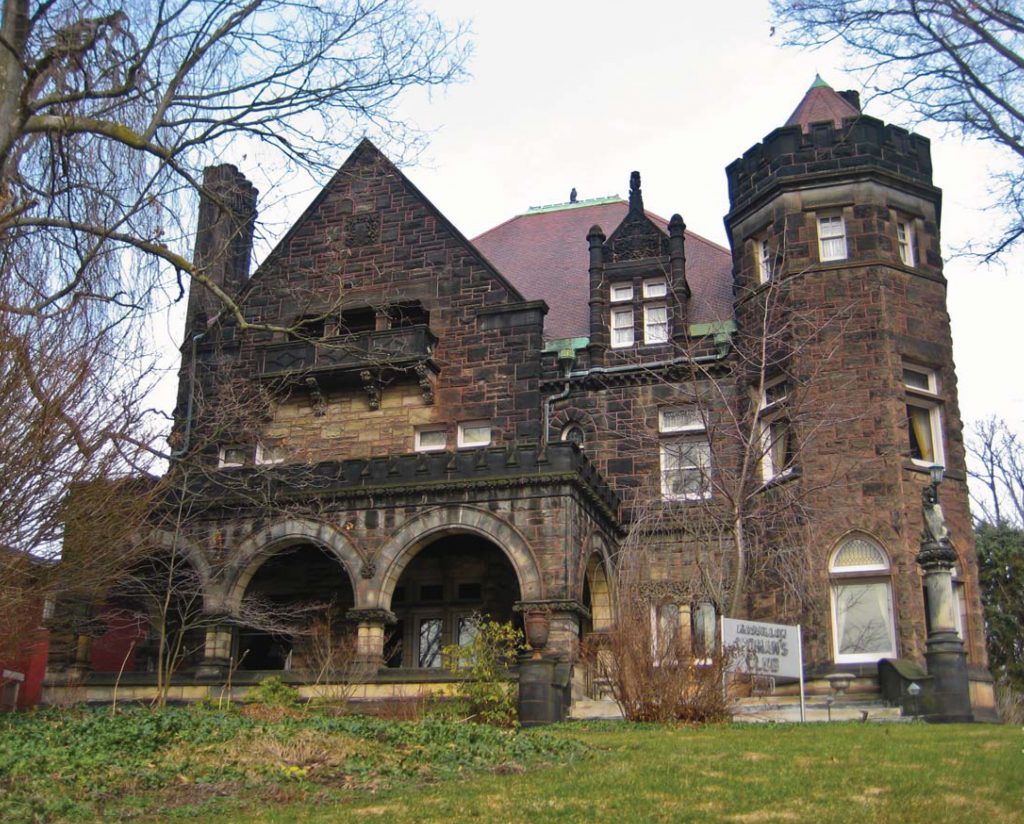
HDC teams with The Tradesmen Group to work on the Governor’s Residence
HDC is working once again with The Tradesmen Group, this time on a project at the Governor’s Residence in Bexley, Ohio. HDC had previously worked with The Tradesmen Group as the General Services Administration’s (GSA’s) representative during the construction phase of the exterior restoration of the federal courthouse in Toledo, Ohio. The two firms teamed to compete for the project to renovate/replace the existing pergola and portico roof on the rear elevation of the Ohio governor’s mansion, which was designed by Robert Gilmore Hanford, a Columbus-based architect, for industrialist Malcolm D. Jeffrey. The mansion was built during 1923–1925 and the Jeffreys lived in the house until Malcom’s death in 1930, at which point it was sold to his sister Florence Jeffrey Carlile. In the 1940s, Mrs. Carlile expanded the house with an addition of a screened garden room on the first floor that led to a covered portico and extended into a wooden pergola. On top of the portico was a small rooftop terrace that served an expanded master bedroom suite. Upon Mrs. Carlile’s death in 1954, the house passed into the hands of the Very Reverend Charles U. Harris, who sold the house to the State of Ohio in 1957, and since then it has been used as the official governor’s residence — or a meeting site if the governor chose to live elsewhere.
The current project is to replace the wooden portico, which itself is a replacement of an earlier version, with a structure that will have a life cycle of at least 40 years. The roof over the portico will be replaced with one that will allow the roof terrace to be more actively used, and any necessary structural repairs will be completed.
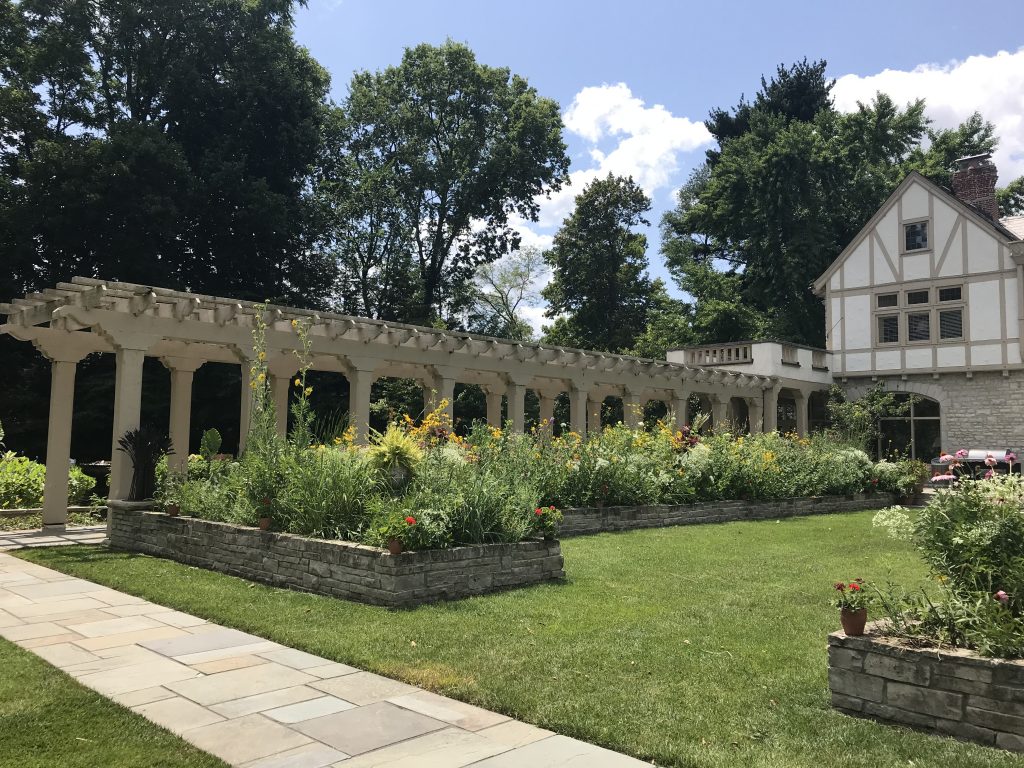
HDC Finds Success Working as a Consultant to Engineering Firms
In the past five years, HDC has been teaming with other architectural and/or engineering firms on a variety of higher education projects. At The Ohio State University, HDC has teamed with Monks Engineers on a variety of infrastructure improvement projects that required some architectural support. For example, at the OSU Newark campus, HDC designed a screening wall for a new generator outside of Reese Hall and also designed a set of concrete steps for access up the hillside. On the main campus, HDC provided details and specifications for historic material demolition and repair to support the replacement of electrical panels in Orton Hall. OSU also asked HDC to design a corten steel screening fence for the equipment yard with a custom pattern, but later determined that an electrical project could not fund a custom fence.
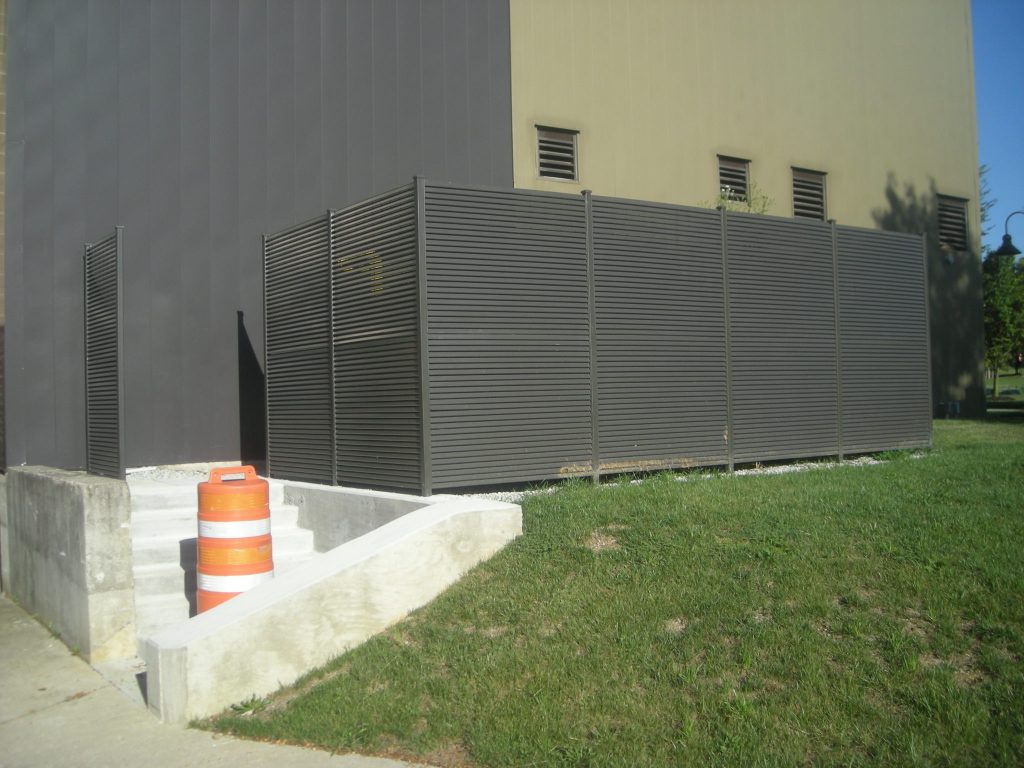
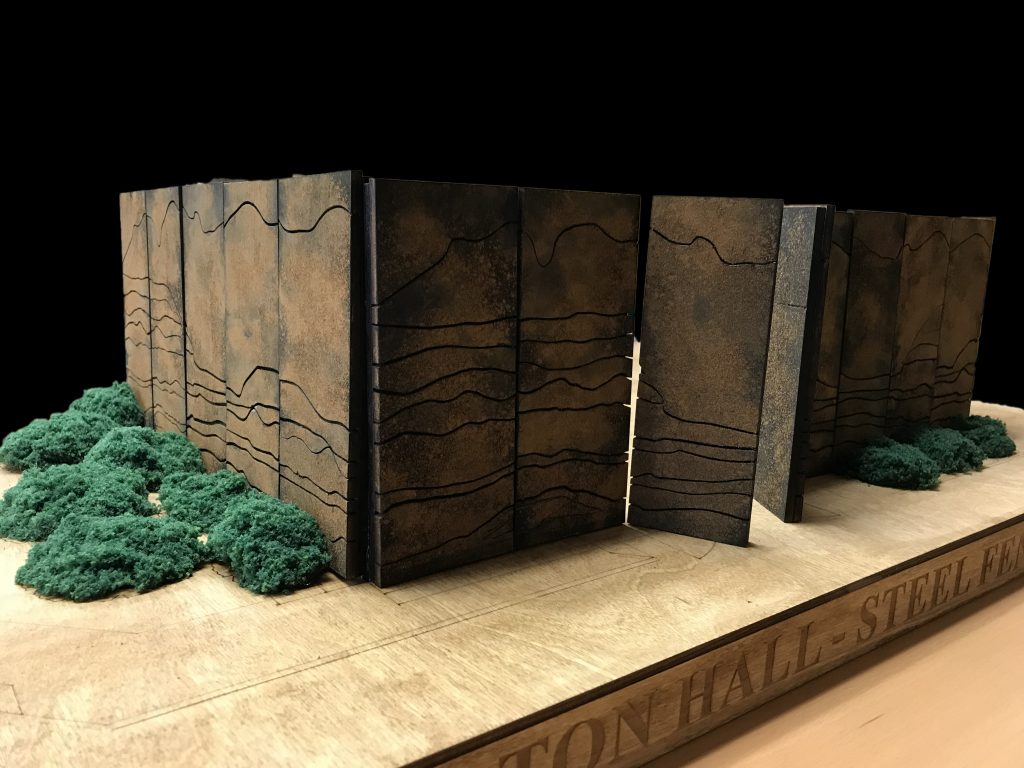
Ziti Graduates (barely) from Foundation Obedience Class!
Since the middle of August, Ziti has been in a weekly foundation obedience class held at the veterinarian’s office next door to HDC’s location in Clintonville. At the end of September, Ziti had her final evaluation. She lost points for sniffing while heeling (the beagle in her is absolutely fascinated with the smells on the floor), and she broke formation during her 1-minute sit-stay and her 2-minute down-stay (she only holds a stay when the reward is great — like dinner). She also didn’t manage to stand still the first time but did pretty well on the second try. However, she was perfect coming when called, which the instructor said is the most important command to know. So, overall, she scored about a 75. Charissa’s husband, Don, noted that Donut did much better at her graduation evaluation; he had to be reminded that Donut was almost a year old at that point and had already been through two Puppy Kindergarten and one Basic Obedience class with another instructor.
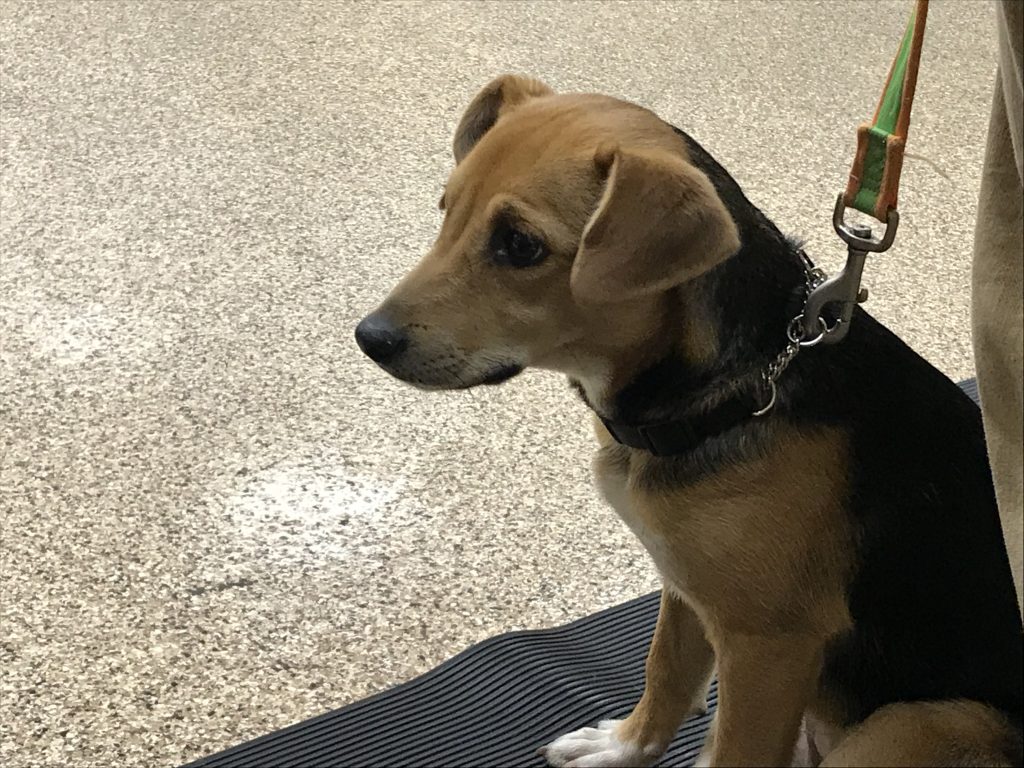

However, Ziti didn’t just spend all seven weeks in class and doing homework. One of the class assignments was to visit a new place every week. So, Ziti got to visit Highbanks Metro Park one weekend and had fun splashing and posing.

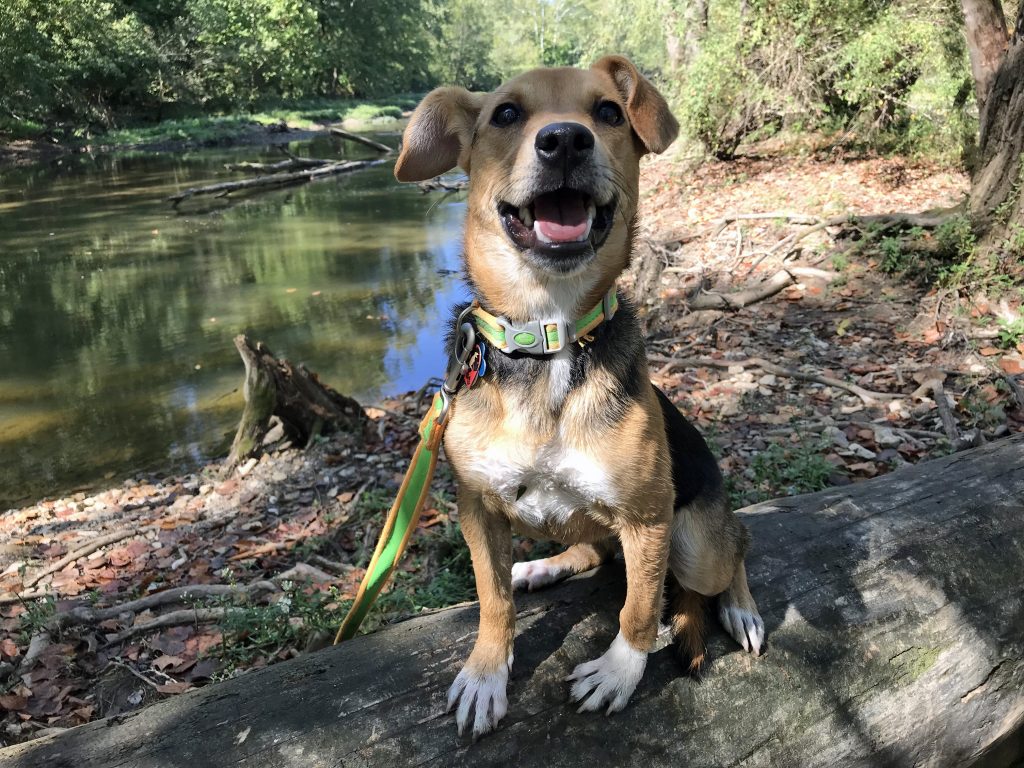
Fall 2018
HDC Staff News
Although Megan Claybon was born and raised in Atlanta, her mother grew up in Upper Arlington and learned to swim at Devon Pool. So it seemed only fitting that Megan coordinate the construction documents for HDC’s project to replace the 1950s pool house with a new building. Just as the project was going into construction after the pool closed before the first day of school, Megan gave birth to Phoebe in August! So, instead of attending progress meetings at the construction site, she is keeping busy with her new daughter at home. We are all thrilled for her adventure in life, but we will greatly miss her at the office!
Prior to coming to HDC, Cathie Senter taught building conservation and preservation at Belmont Technical College in St. Clairsville, Ohio. While she was wrapping up her teaching and housing situation, it seemed logical for Cathie to coordinate the construction documents for HDC’s projects in eastern Ohio: an expansion to the existing paper packing plant at nearby Belmont Correctional Institution and the replacement of exterior stairs at Noble Correctional Institution. In July, Cathie’s dog Casey passed away at the age of 15-1/2 years. Several people at the Harrison County Dog shelter, where Cathie often volunteers, forwarded her information on three Lab/Sharpei mixes that had recently been rescued. Cathie took a fancy to one she called Murphy. Murphy and his brothers ended up at the “Save a Puppy” program at Belmont Correctional Institution, where inmates provide obedience training and socialization. Cathie was able to meet with Murphy and his trainer while attending job meetings on site, and after Murphy graduated in August, she brought him to his forever home in Columbus.


Murphy alone (left) and with Cathie (right)
For their 13th wedding anniversary, Charissa Durst and her husband took a driving trip north to Michigan. They attended the Cherry Festival and visited Sleeping Bear Dunes National Park and then Pictured Rocks National Lakeshore in the Upper Peninsula. Bookending the trip was the initial stop at the Air Zoo in Kalamazoo and the final stop at the Henry Ford Museum in Dearborn, where there was an exhibit on Charles and Ray Eames.


Air Zoo exhibits (left) and an Eames furniture exhibit (right)
HDC works with Commonwealth Heritage Group on the Ballville Dam
HDC continues to work with Commonwealth Heritage Group on the historic documentation of the Ballville Dam, which was proposed for demolition to restore the natural flow of the Sandusky River near Fremont, Ohio. HDC is providing the drawings. Charissa Durst visited the site in 2017 to obtain information and start the drawings. The dam was demolished in July and HDC visited to check conditions that were not previously visible. The drawings are scheduled to be completed this fall.
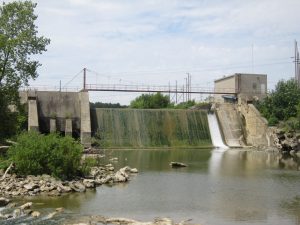
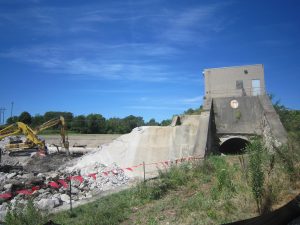
The dam before demolition in August 2017 (left) and during demolition in July 2018 (right)
HDC Starts Work on the USAF Alert Facility Cold War Museum in Blytheville, Arkansas
In 2016, a pilot and volunteer interested in saving the 1950s Alert Facility on the former Eaker Air Force Base in Blytheville contacted HDC about preparing a study to determine the costs to rehabilitate the abandoned building into a museum. HDC visited the site and provided information on the costs needed for a study. The project moved forward in the April 2018 when HDC made a presentation to the board about the work needed to complete the study. In three months, the funds were raised to commission HDC to prepare the study, and Charissa Durst and John Creasy drove down to Arkansas to conduct field work. By happy circumstance, at the WPO conference in Los Angeles, Charissa Durst sat next to A.J. Goehle, the executive director of Luci Creative, who happen to be museum designers with military project experience. HDC has partnered with Luci Creative to provide recommendations and budgets for the museum’s future exhibits. The goal of the museum is to provide a memorable experience on what it was like to be on 24-hour alert to defend the United States from a Soviet attack.
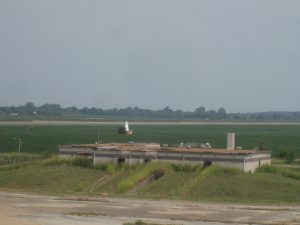
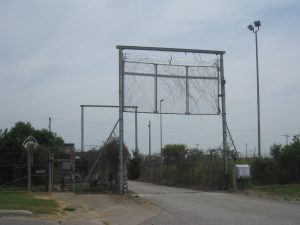
Alert Building from the Guard Tower (left) and one of the security gates that will be part of the visitor experience
Donut Runs (Almost) Free in the Park
Throughout the summer, Donut often goes to the Prairie Oaks Metro Park on the weekend. In June, before it got really hot, she happily ran down the mowed paths on the prairie section. Donut has always been an unusual beagle in that she doesn’t wander off on her own. We often drop her 40-foot leash and let her run ahead before calling her back for a treat—her absolute favorite park activity. Later, when it became really hot, Donut would end up in Big Darby Creek getting a drink and cooling off, her second favorite thing to do at the park.
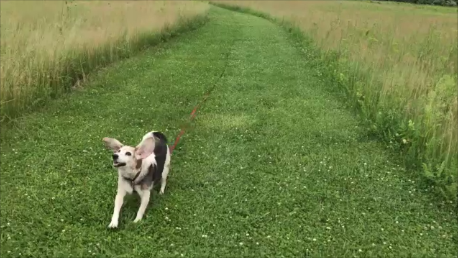
Donut running with ears flapping
Spring 2018
President Charissa Durst Honored as a Progressive Entrepreneur
Charissa Durst was named a 2018 Progressive Entrepreneur Honoree at the Smart Women Breakfast on April 17, 2018. The award recognizes female entrepreneurs who have forged their own path and developed a company that has achieved substantial growth. Charissa was honored for establishing herself as a leader in her field and among other women business owners, as well as for building Hardlines Design Company (HDC) from the ground up into an award-winning company that has earned an excellent reputation for its creative approach to architectural design and its love for the renovation of historic buildings.

Demonstration of D/2
Cathie Senter gave the office a demonstration on how to clean masonry using D/2 Biological Solution, which is a non-toxic cleaner that can be sprayed onto masonry at full strength or diluted with water. We used bricks obtained from the Dawn Theater during the last field visit and confirmed that the brick featured black speckles that matched the original black mortar. The longer the brick was in contact with the solution, the cleaner it became. D/2 is also commonly used to clean historic gravestones in cemeteries.
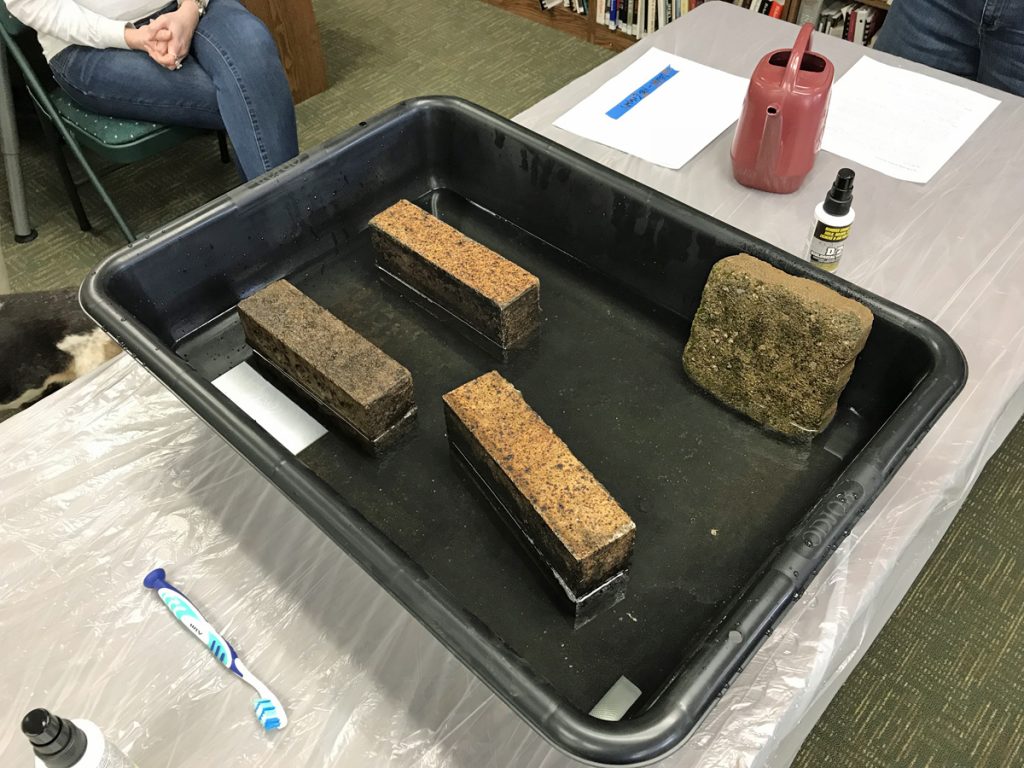
Bricks from the Dawn Theater in a D/2 bath
Woodward Opera House Gets Partial Occupancy Permit
After 17 years, there is a light at the end of the tunnel! The Woodward Opera House project received partial occupancy at the end of March, which allowed portions of the building (the commercial sections) to be leased and occupied. Areas still under major construction include the theatre areas, which likely will not be ready until the fall season at the earliest. Charissa Durst and Brad Curtis have been working through the federal historic tax credit reporting forms as well as responding to issues brought up by the contractors and state inspectors. Many people have been asking about a grand opening, and we hope to have some news on that soon!
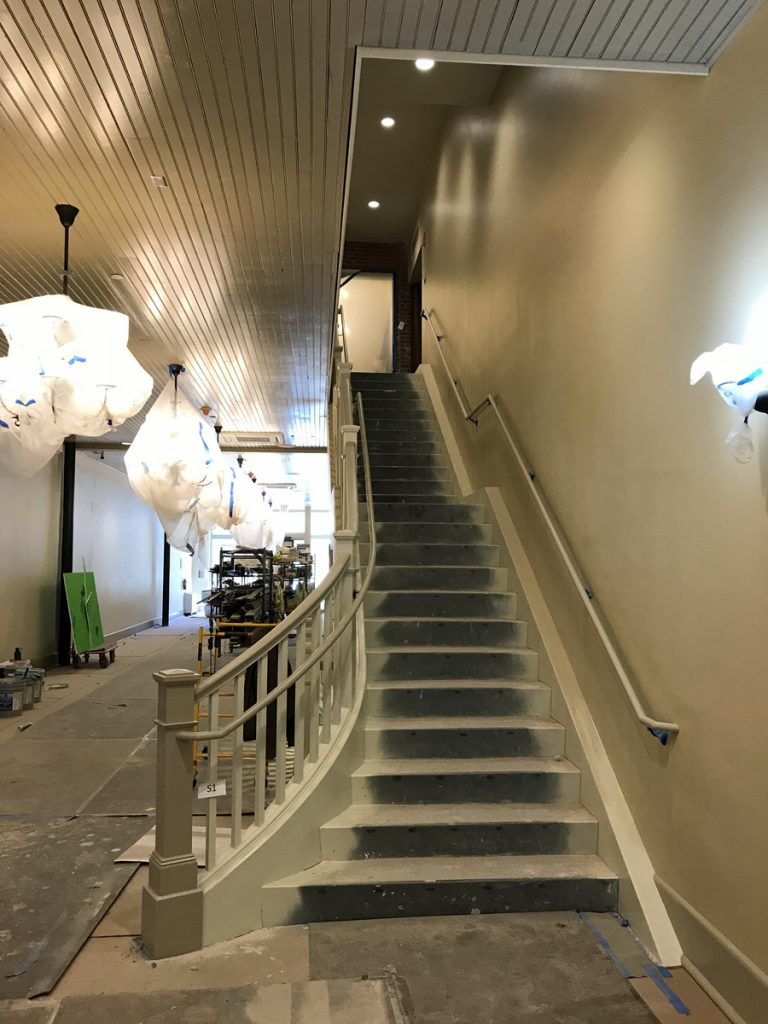
View of new main stair in the Promenade, April 2018
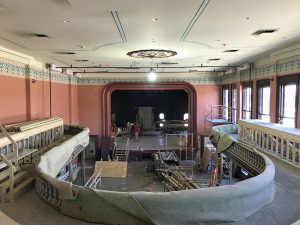
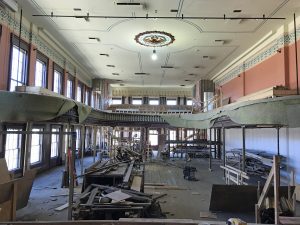
View of the Stage (left) and view of the Balcony (right)
HDC works with Commonwealth Heritage Group at the St. Louis Arsenal
Last fall, Commonwealth Heritage Group asked HDC to team with them on a project at the historic St. Louis Arsenal in Missouri for Scott Air Force Base in Illinois. HDC’s portion of the project was to conduct a conditions assessment and prepare repair and mothballing recommendations for when the Air Force transferred ownership of the buildings to the General Services Administration in the near future. Cathie Senter conducted the field work and recently contributed to the executive summary currently under review.
The Arsenal has a long history that began in 1827, when the site was used to manufacture and repair small arms and gun carriages for the Army as well as territorial militias west of the Mississippi River. It played a key role in settling the American West from arming U.S. troops during the Indian Wars of the 1830s to being a Union outpost during the Civil War. The Arsenal property is today a satellite to Scott Air Force Base and is highly secure, and all field team members had to be escorted and could not take photographs. However, the following historic images are already in the public domain and can be shown here.
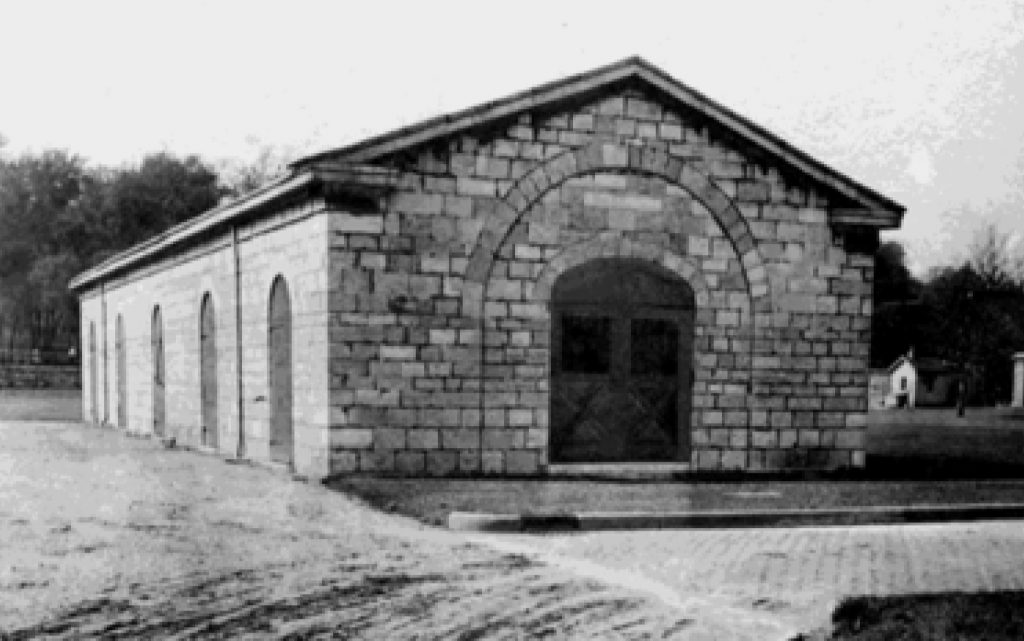
Historic photo of Building 7, built 1849-50 as the Ordnance Coal House and now the Visitors Center.
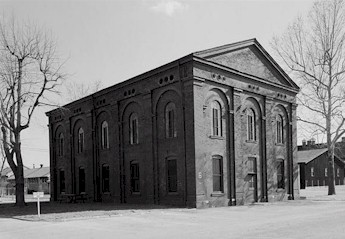
Historic photo of Building 6, built in 1852 as the Carriage-Maker’s Shop and now demolished.
When the Boss is Away, the Dogs Will Play
When HDC President Charissa Durst attended the Women Presidents Organization annual conference in Los Angeles, Donut the Beagle stayed home to be tended by Charissa’s husband, Don Durst. Meanwhile, back at the office, the staff’s dogs made guest appearances.
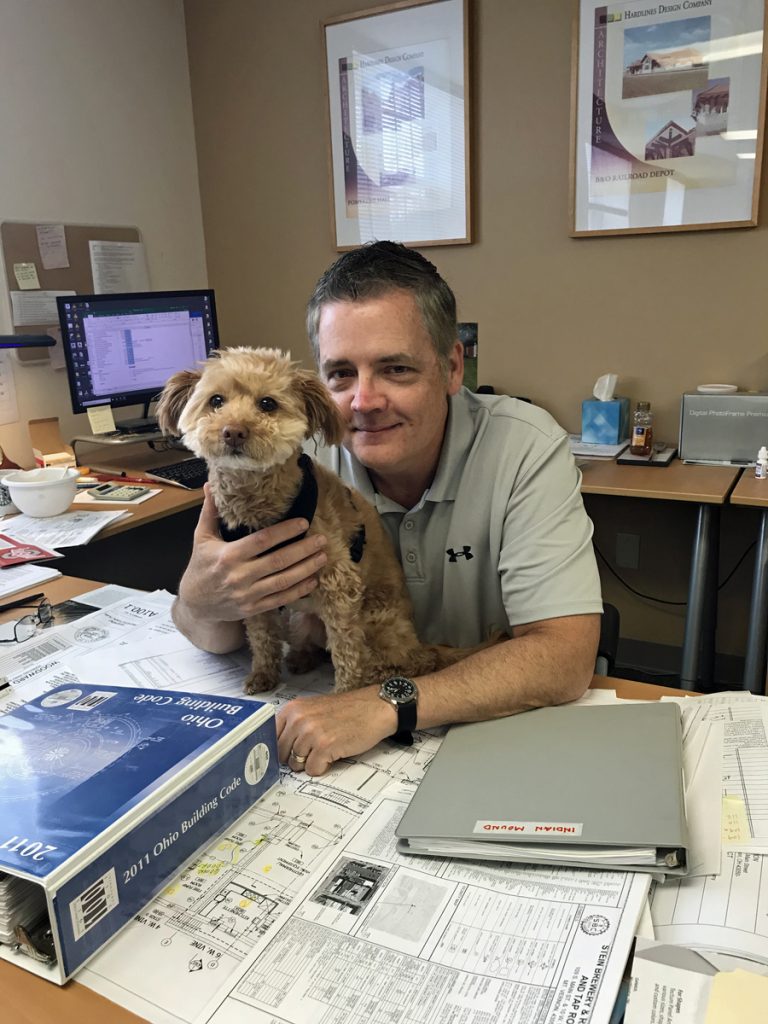
Brad tries to teach Baxter the building code.
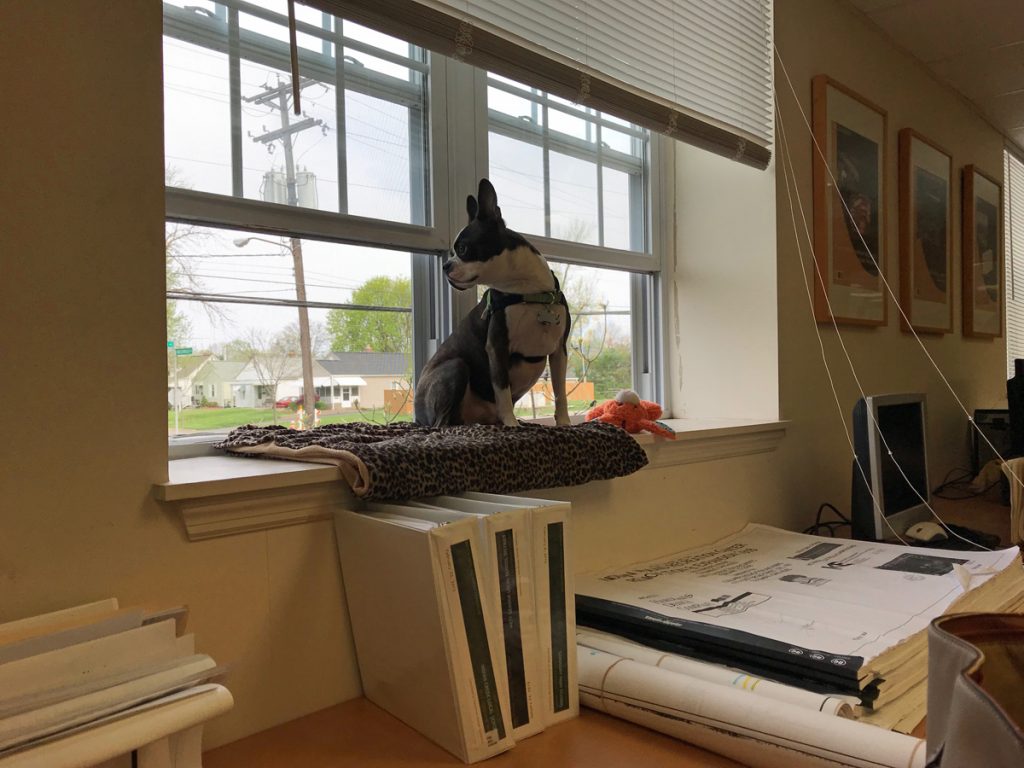
Megan’s Sherlock refuses to do any work and prefers to watch traffic.
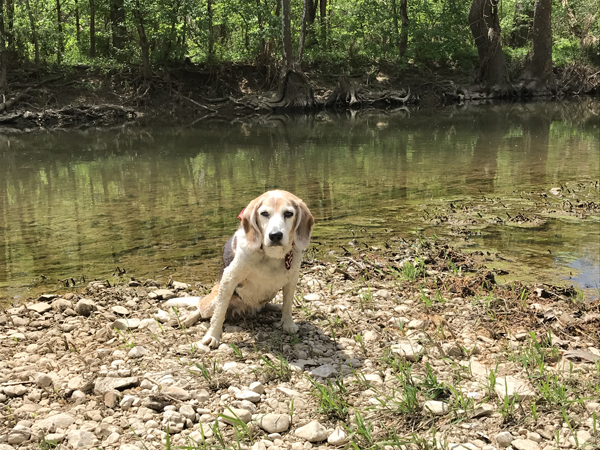
Donut, who turned 14 on March 25, goes to Prairie Oaks Metro Park the weekend after the WPO conference and would rather be splashing in the water than posing for a photo.
Winter 2018
It’s Called a WHAT?
While attending Heritage Ohio’s 7th Annual Appalachia Heritage Success Stories meeting in December, Charissa Durst, Megan Claybon, and Cathie Senter got a tour of the Ohio statehouse. From the floor of the atrium connector you could see the underside of the soffits of the Greek Revival annex building, and what appeared to be Lego pieces on the underside. Cathie was able to identify these pieces as mutules, since she once taught a restoration class where they cleaned and restored so many wooden versions that they were all sick of the word.
Officially, a mutule is a rectangular block that hangs from the soffit of the cornice in the Doric order and appear over the triglyphs. They are likely a stone translation of the round pegs used to fasten structural pieces together when Greek temples were made entirely of wood. Even so, they still look like Legos pieces to me!
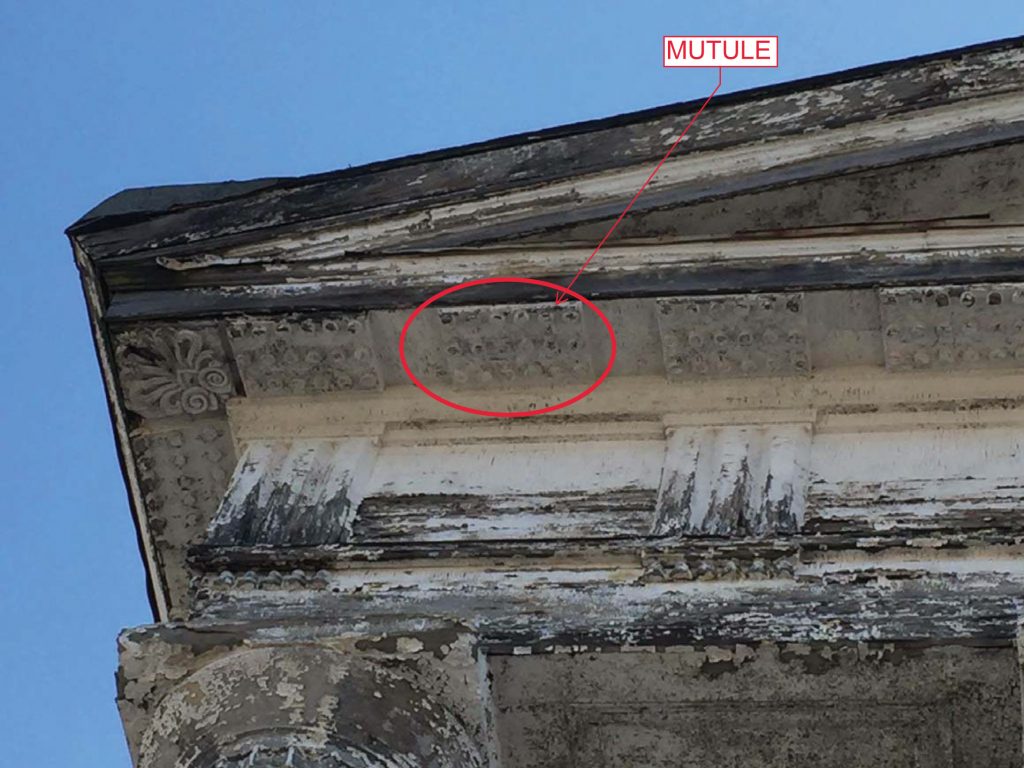
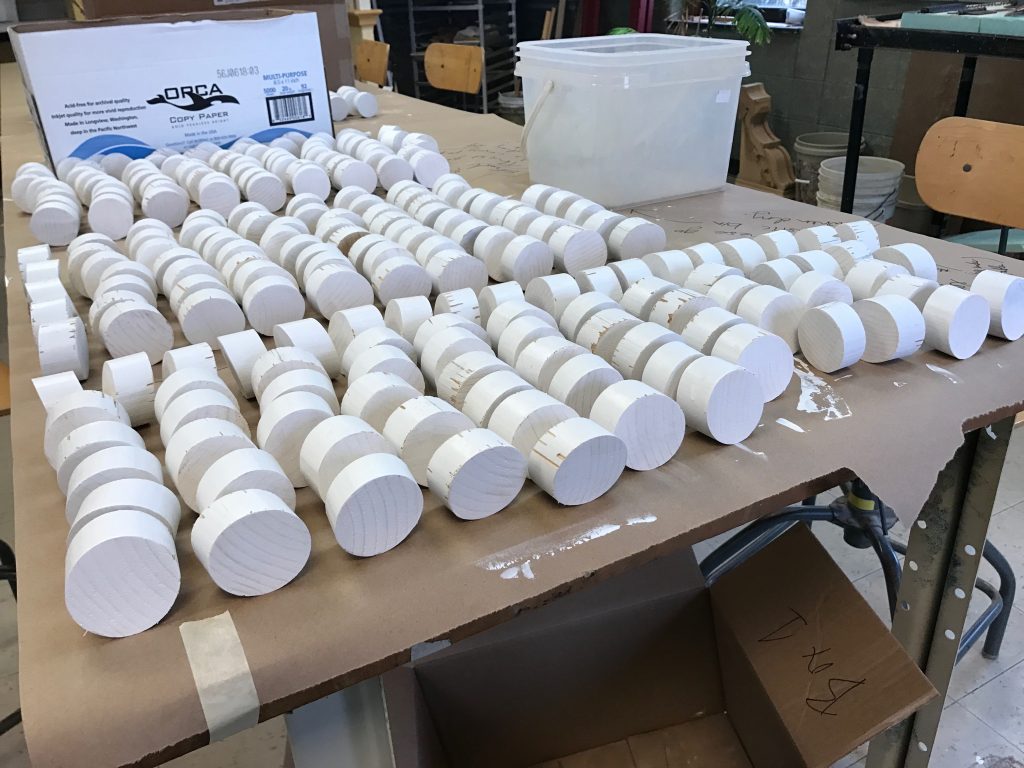
HDC Commissioned to Rehabilitate the Dawn Theater
The City of Hillsdale, Michigan, commissioned HDC in December to rehabilitate the Dawn Theater, a vaudeville/movie house that opened in September 1919. The building was renovated in 1938 with the addition of “Nu-Wood” acoustical paneling and again in 1970 when the brick façade and windows were covered with cement panels, which also unfortunately removed the stepped parapet. The theater’s latest use was a nightclub, where tiers infilled the sloped floor to make room for dining tables. Two rows of original movie seats still remain in the balcony. The goal of the rehabilitation is to restore the front façade and rehabilitate the interior for continued use as a banquet and meeting space.
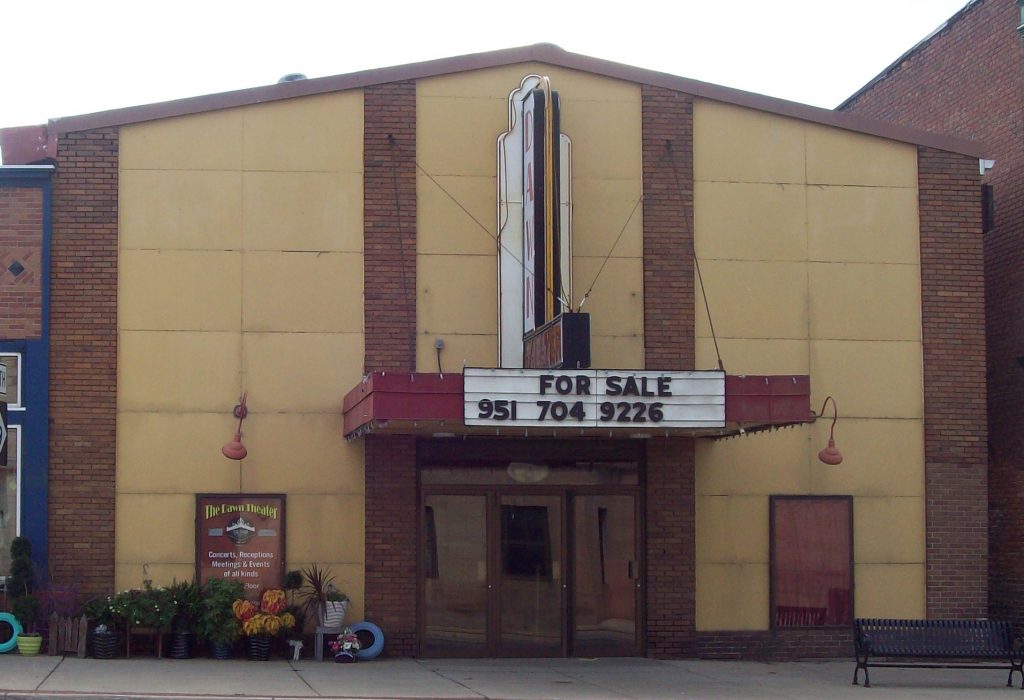
The facade of the Dawn Theater as it looks today
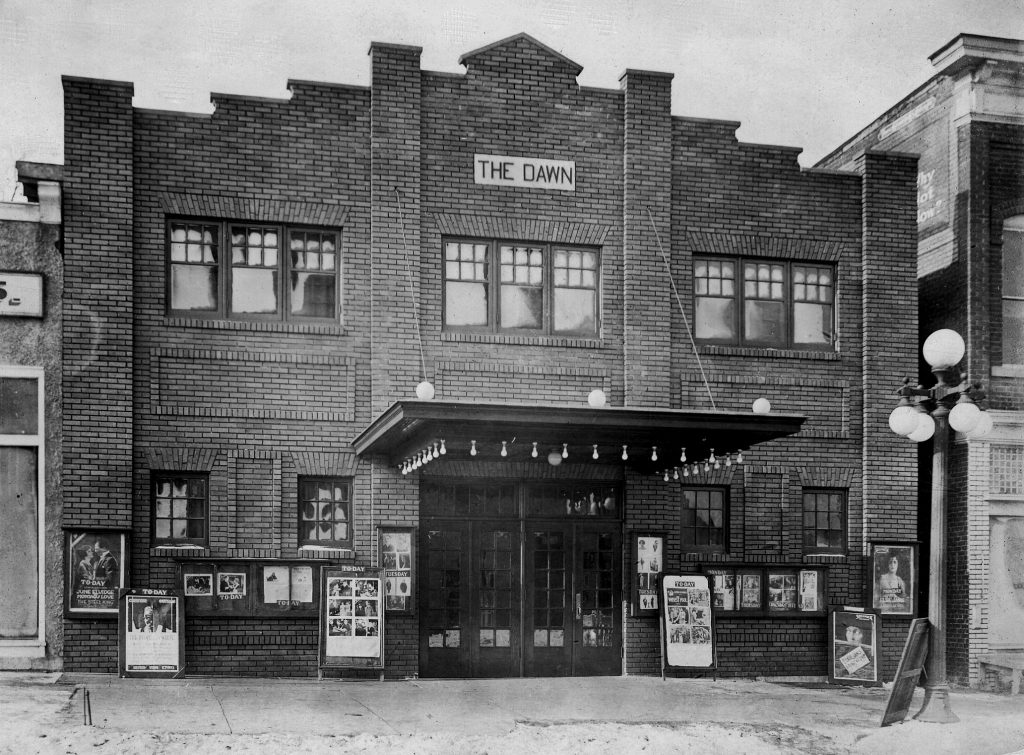
The facade of the Dawn Theater when it opened in September 1919.
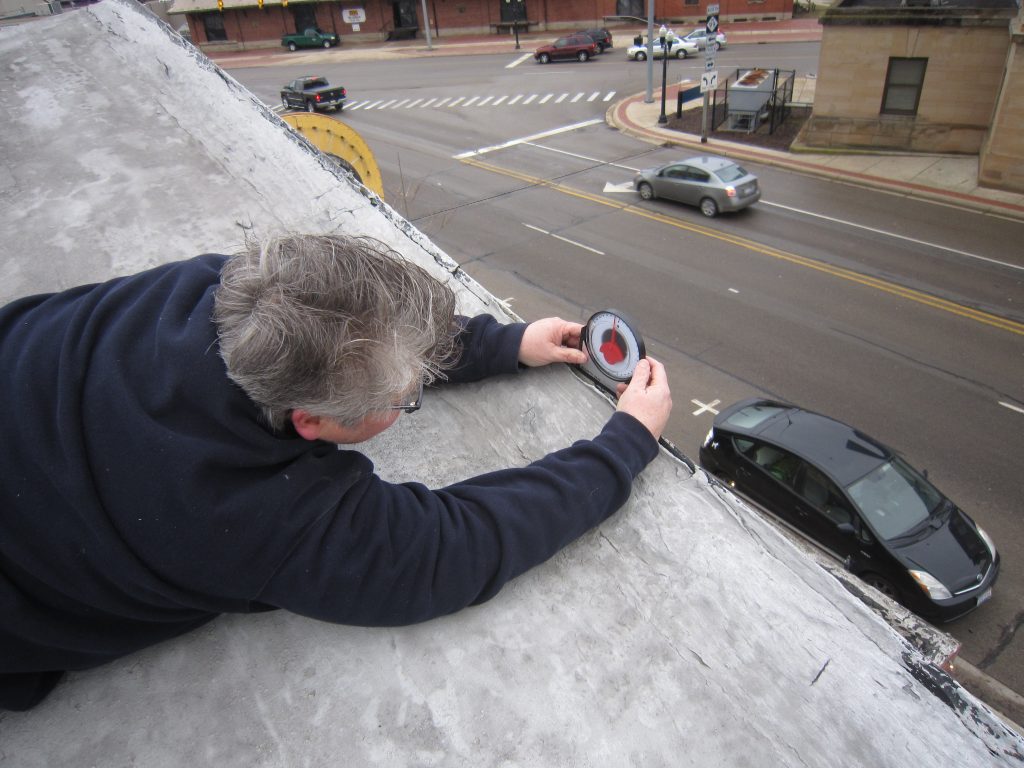
HDC employee Cathie Senter measures the slope of the parapet
Devon Pool Project Out to Bid
In Spring of 2017, the City of Upper Arlington commissioned HDC to make improvements to the existing pool house constructed in the 1950s. After a series of public meetings and presentations, the City decided to replace the existing building. The new building is scheduled to be open by Memorial Day 2019 with new shade structures and deck furniture provided this Memorial Day 2018. The new pool house will contain enlarged facilities for the staff, dressing rooms and interior showers, a concession stand with kitchen, and ample storage.
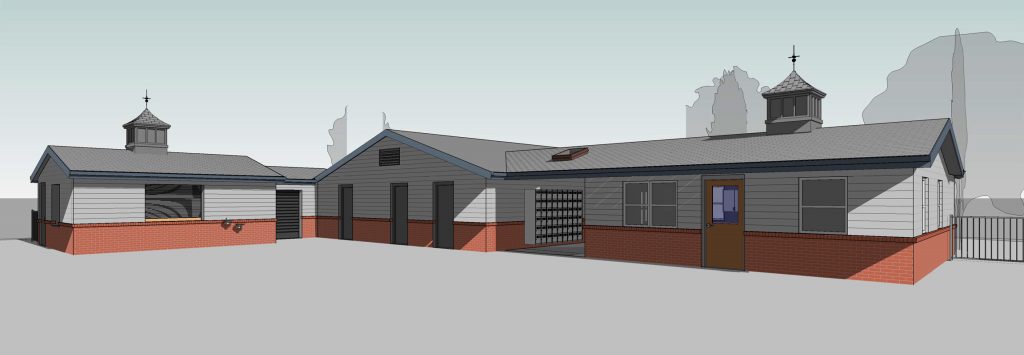
REVIT rendering of the new pool house
Clark County Exterior Work Almost Completed
When HDC was commissioned by the Clark County Commissioners to renovate their administration buildings in 2015, all parties knew that the wish list of work exceeded the available budget, especially at the historic courthouse and A.B. Graham building. HDC’s prioritized the work by securing the exterior envelope before considering interior improvements. HDC saved the county money by creating separate bid packages for roofing, windows, and masonry, negating the need for a general contractor and their markup. With the completion of the exterior work, County agencies are meeting to decide where the remaining funds should be spent and whether to appropriate additional money for the entire wish list.
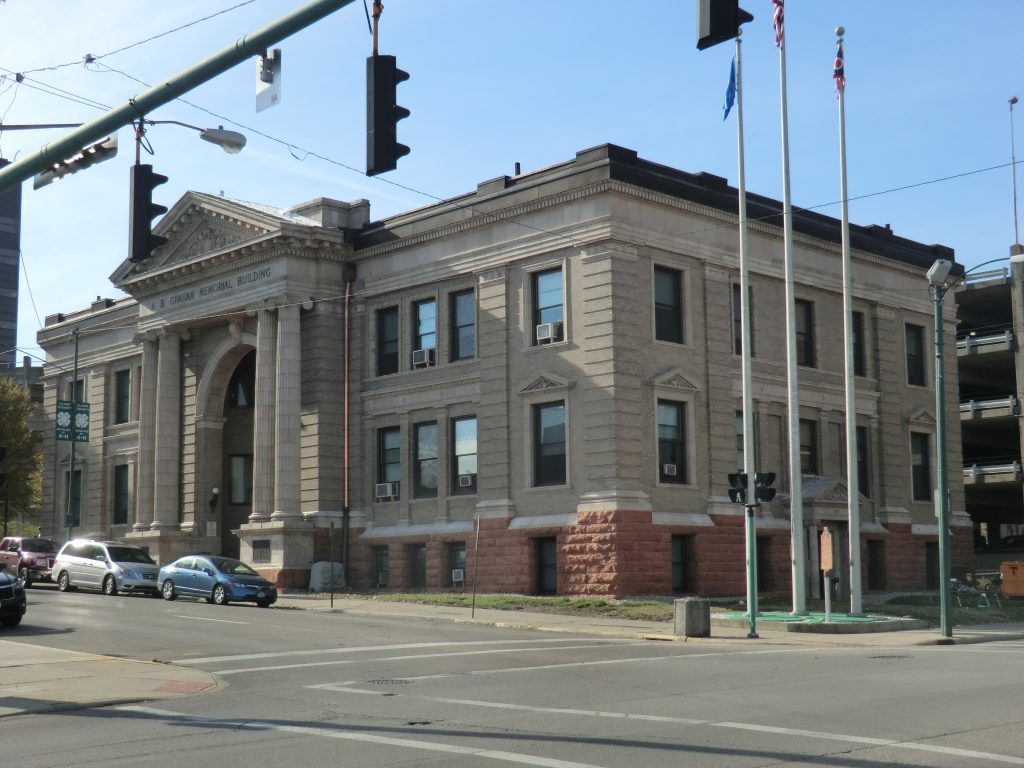
Exterior of the A.B. Graham Building
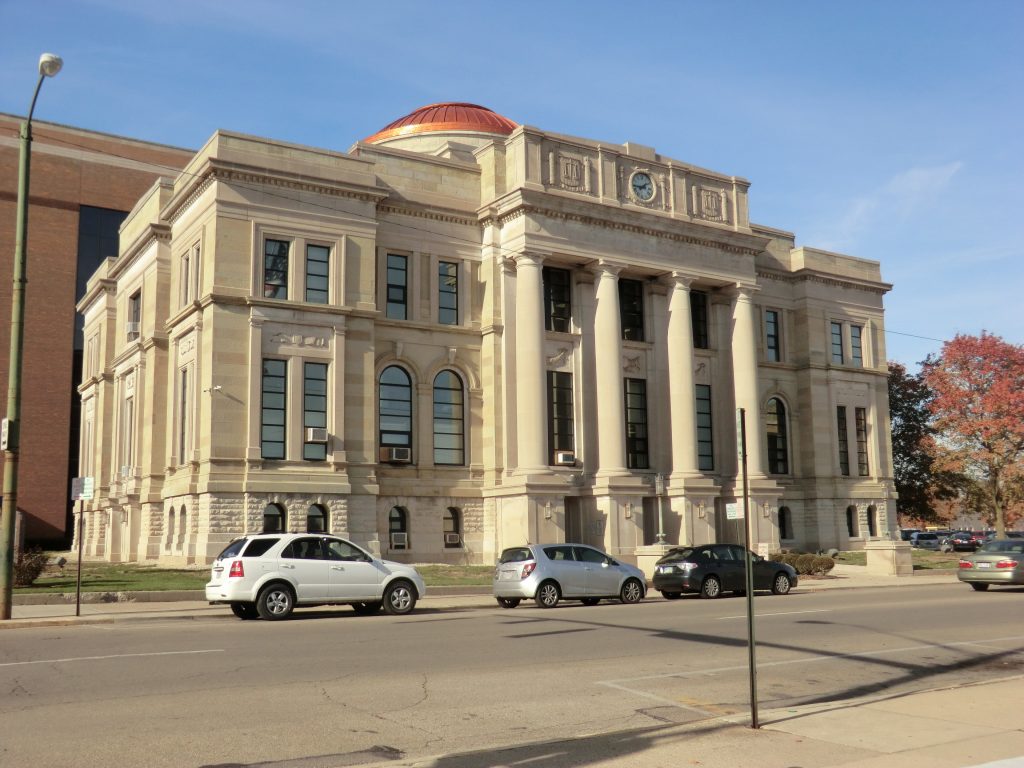
Exterior of the Clark County Courthouse
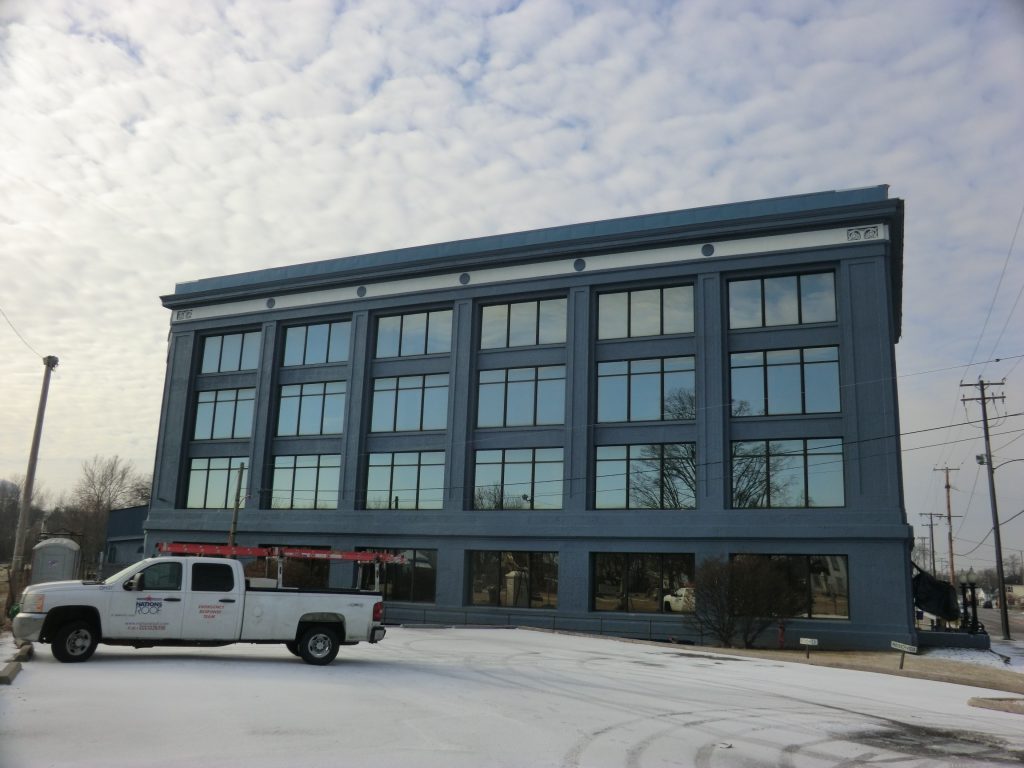
Exterior of the Jobs & Family Services Building
Donut Defies the Cold!
Right after Christmas the temperature dropped to the teens and single digits. When it gets this cold, Donut’s paws usually start hurting after a few minutes when she walks through snow/ice. However, when she sees the sun shining through the window she just wants to go outside and run. Spraying her paws with non-stick cooking spray seems to buy more time outside when it’s cold. Here’s a picture of her enjoying the sunny weather and facing down the wind.

Donut on a rock at Prairie Oaks Metro Park
Holiday 2017
Best wishes for a safe and happy holiday season and a prosperous 2018 from all of us at Hardlines Design Company!
Cathie, Brad, Megan, John, Charissa, and Donut
And here are our canine companions, who also want to chime in:
 Charissa’s beagle Donut, in 2017
Charissa’s beagle Donut, in 2017
 Brad’s buddy Baxter, dressed up in 2016
Brad’s buddy Baxter, dressed up in 2016

Sadly, John’s dog Roscoe passed away in 2017; here he is in 2011
 Megan’s baby Sherlock, in 2017
Megan’s baby Sherlock, in 2017
 Cathie’s 14 years old Casey, in 2017
Cathie’s 14 years old Casey, in 2017
If you would like a copy of the 2018 Donut calendar, click HERE.

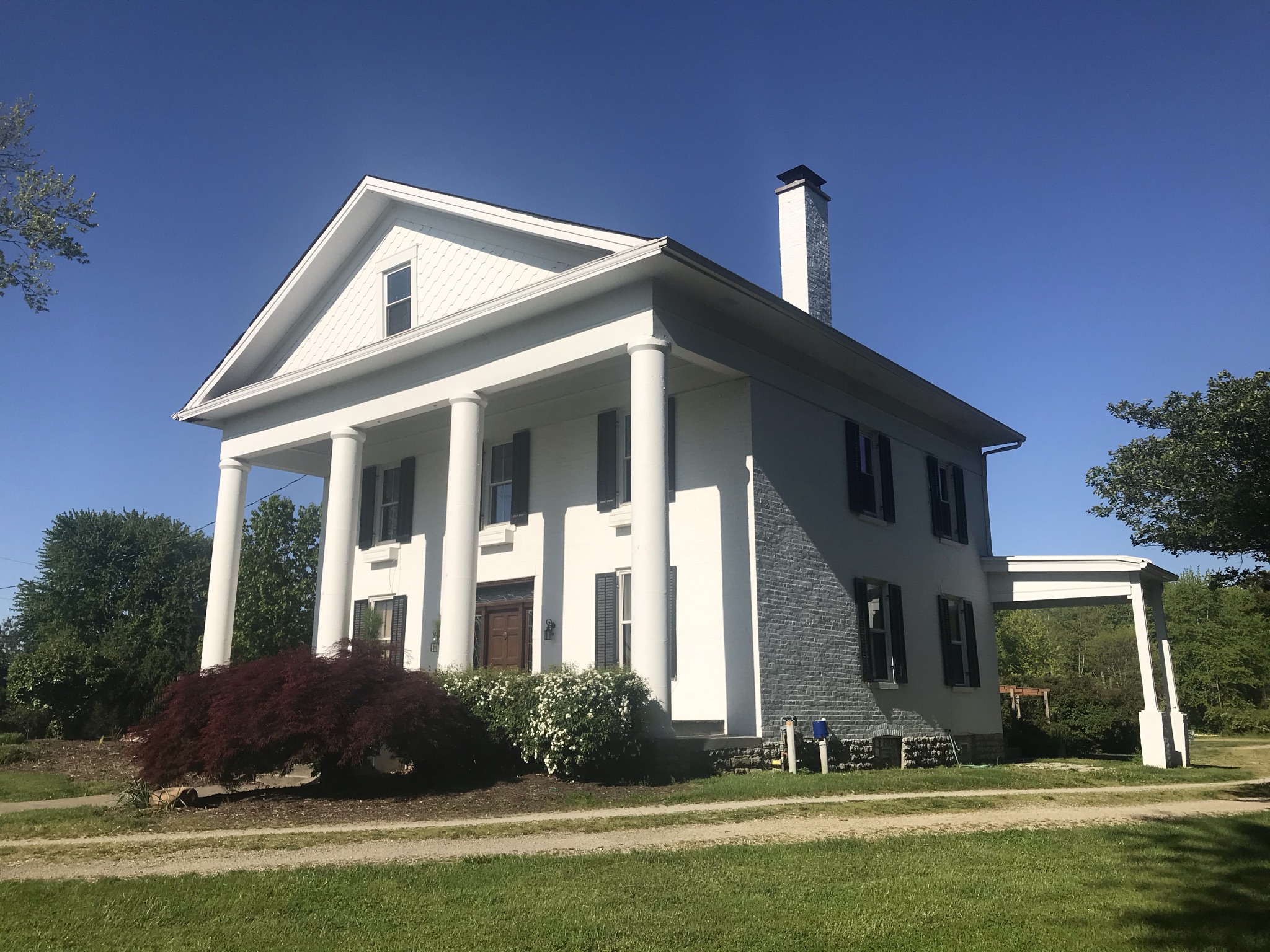 Northeast corner of the Meade House in Symmes Township
Northeast corner of the Meade House in Symmes Township
